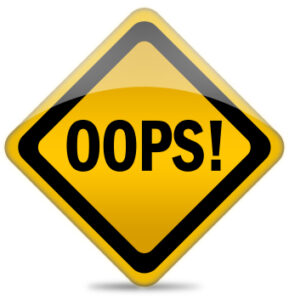 It can be frustrating when a press release you’re particularly excited about goes absolutely nowhere. But even if you’ve gone over the writing several times there are a few mistakes you’ve probably missed and that’s what kept it from getting picked up. Instead of getting mad or frustrated, let’s take a look at some common errors on press releases and figure out if this is where you went wrong!
It can be frustrating when a press release you’re particularly excited about goes absolutely nowhere. But even if you’ve gone over the writing several times there are a few mistakes you’ve probably missed and that’s what kept it from getting picked up. Instead of getting mad or frustrated, let’s take a look at some common errors on press releases and figure out if this is where you went wrong!
Headline
This is one of the more common areas where mistakes are made. Sadly, it’s one of the more crucial parts of your press release, as most journalists won’t even make it past this if it’s not good. They’ll take one look at your bad headline and toss the whole release in the trash.
There are two things to consider when writing your headline. One, does it tell the whole story of the release? In other words, can the average reader tell what the gist of the story is just by the headline? And two, is the headline as short and to the point as possible? If your headline is twenty words long, it’s time to trim it down.
First Paragraph
The first paragraph of your press release can often be as crucial as your headline. If journalists make it past your headline they will skim the first paragraph to determine if the entire rest of your release is worth checking out. So if it doesn’t shine, you’re sunk.
The rules for the first paragraph are roughly the same as your headline. You want as much information in there as you can get with as little wording as possible. Put all the most relevant info here and save extra stuff for later. Stick to the who, what, where, and when points and try to fit it all in one or two sentences. Any more than that and you risk losing your audience.
Rambling Off Point
You’ve managed to craft your headline and your first paragraph well enough so the reporter reads further into the release. Now all you have to do is stay on point and keep them interested so they’ll agree to print the thing in the newspaper.
Unfortunately this is another common area where writers go wrong. It’s not necessarily the spelling or grammar (though these can definitely ruin your chances) but not staying on point can spell doom.
Is the information you’re including in the body of the press release relevant to your point or is it juts fluff? Keep in mind PRs don’t have to be epic on length; a 200 word release is no more or less important than a 1,000 word one. It’s the content that ultimately matters, and if you’re adding junk for the sake of space, you might as well just delete the document off your computer… because it won’t get printed anyway.
Which of these mistakes have you made with your press releases?
This article is written by Mickie Kennedy, founder of eReleases (https://www.ereleases.com), the online leader in affordable press release distribution. Download a free copy of the PR Checklist – a 24 point list of Press Release Dos and Don’ts here: https://www.ereleases.com/free-offer/pr-checklist/
